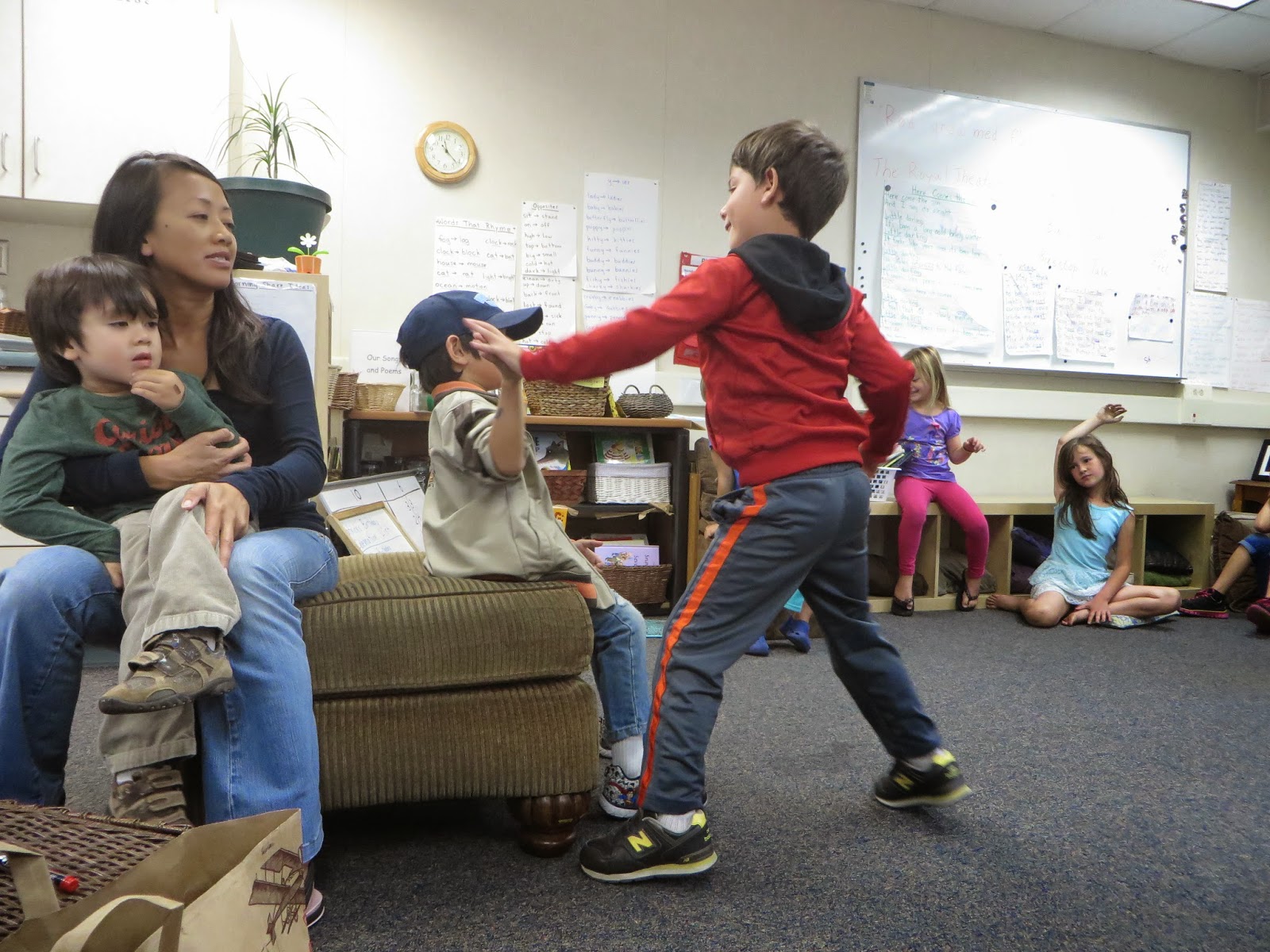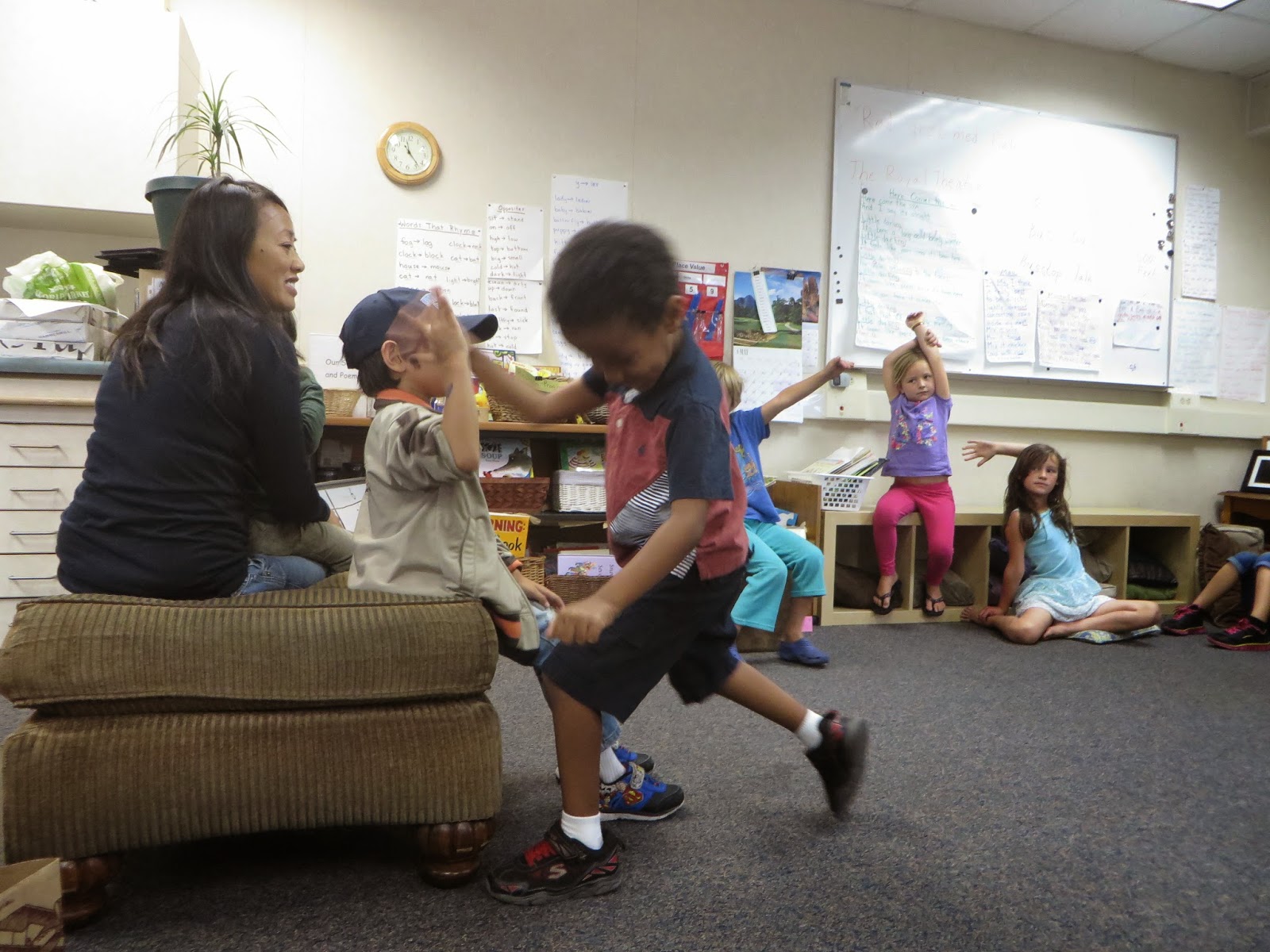Friday, May 30, 2014
Wednesday, May 28, 2014
What Does That Equal?
Good evening!
I have another homework post for you guys to try out at home! It all started with out curiosity with the concept of time. What is a second? What is a minute? What is an hour? Through group discussion, we were able to break up a bit of our afternoon using the information we know about how to read a clock.
When all of a sudden, someone mentions that their clock doesn't have numbers on it, it has LETTERS. With that, we began exploring Roman Numerals. Friends were struck by how these special letters can represent numbers! Take a look at the images below to see how friends started figuring out how to decode Roman Numerals using addition.
Here is some homework for your child to work on (DUE FRIDAY). They can try any or all of the problems listed and please help them show their work like in the example above. Have fun!
Thank you for supporting your child to continue their learning beyond the classroom!
Love, Gaby
Friday, May 23, 2014
Homemade Bread, Homework, and MORE!
Happy Friday!
We had a special guest join us this week to help us learn a little more about their family's cultural background. Pernille shared with us her knowledge of how to make a traditional danish bread out of wheat grains. She illustrated the different parts of the wheat to show where the seeds came from and what happens to the rest of the plant after the farmers harvest the crop.
She guided the students in following a recipe that she knows by heart--- no written instructions needed!
The wheat seeds needed to soak in water over the hot plate for 30 minutes. So in the meantime, the Hardworking Journalists were given a lesson on the Danish alphabet, learning their shapes and sounds. We even learned how to spell and read different animal names the sounds that they make in Danish!
Denmark, being a country in a different continent, is very different from California, especially weather wise. Check out how their seasons!
The friends even got a big of an economics lesson. Check out how these stats about how much our countries differ in how much taxes are taken out and what they are used for (an x on the left indicates that taxes are used to pay for the services).
After the half hour passed, friends came back to see how the dry grains of wheat had changed after soaking in water. Then came the part of adding the rest of the dry and wet ingredients.
Using a scale, friends measured in cups of flour until the reached 900g!
But it wasn't dough yet, so friends pitched in to squish the sticky dough and mix the ingredients together.
After kneading the dough, Pernille shaped it into a loaf and placed it in a pan to take home to cook in her oven.
In the afternoon, when the bread had finished baking, she came back to share it with us, adding butter and jam to complete this traditional, tasty treat!
If you would like to make this bread at home with the wheat seeds your child took home, feel free to follow the recipe below!
Danish Bread:
Ingredients
100 g Seeds( you can use sunflower seeds instead( do not cook them)
1 teaspoon salt
7dl water
1 tablespoon yeast (dried)
2 Tablespoon olive oil
900 g flour
Instructions:
You start off by cooking the seeds in 5 dl water for 30 min or until they open. Mix in the salt as they cook. After that, pour into a large mixing bowl and add 2 dl of cool water to the mix. Then you put in the yeast. Mix well. Add oil. Mix well. Add the flour and let the dough rest on wax paper in its pan for 1/2 - 1 hour. Place it in a cold oven and bake at 350 Fahrenheit for 35 min. Enjoy your 2 loaves!
Thank you again to all the families who encourage their children to share what they find interesting outside of school to help us learn more about the world we live in. This week, we had a friend bring in her seashell collection, which included some muscles, sand dollars, a sea urchin, a large clam, and other shells.
This inspired another friend to bring in her collection that she found on her trip to New York. There were so many that friends were not sure of the name of, but we worked together to categorize them by similar traits, assuming that they come from the same family. Do you recognize any of these sea creatures?
Another friend brought in an illustration that they made at home after seeing giraffes at the safari park. This got the class discussion this majestic creature's anatomy, adaptations, diet, and habitat. Friends shared their knowledge about how a giraffes spots work as camoflauge for when they are among the trees. Since the sun rays stream through the leaves and branches of the trees, the giraffe's spots, look just like the shadows that are made around them. They also knew that the giraffes had long necks so that they can reach the leaves way up high, and they use their tongues the way we use our fingers and grab the leaves by wrapping it around and pulling. Some friends are not sure if giraffes can reach down low to eat the smaller vegetation-- but if they can't reach down low, how can they drink water? Do they only drink when it rains? Why wouldn't they be able to reach down low? I leave these questions up to the friends who wish to do some research at home, by either reading about giraffes, looking on the internet, or finding a video showing how they do it. Please bring in your findings next week!
Thank you to Korey and Onie for being our Family Readers this week!
This week, we also worked in Math Pairs. I invited the friends to think about all the different ways they can think of finding the sum of 10. By using a T-chart, friends were able to find the number families of 10! In doing this activity, friends remembered the communicative property of addition, which helped them find even more solutions!
Below are the solutions friends found for the number 10 and the number 6. I have assigned as homework to find which numbers add up to 12 and 18. Please support your child in finding as many as they can (it does NOT have to be all possible solutions). Friends found that using manipulatives (gems, stones, straws, etc) helps them to check their work. Have fun!
We
We ended our week with a birthday celebration!
We sang "Happy Birthday!"
We sang "Here Comes the Sun"
We gave Birthday High Fives
We played Steal the Bacon
We played Mr. Fox, Mr. Fox, What Time Is It?
Then we had a special treat!
Thank you everyone for all of your support!
Love, Gaby
Subscribe to:
Comments (Atom)



.jpeg)































































































